A Complete Guide to Dominican Republic Beach Safety
Beach safety in the Dominican Republic: Stay safe with tips on lifeguards, swimming areas, beach flags, rip currents, wave conditions, marine life, and more.
PRACTICAL INFO & RESOURCES
3/20/20259 min read
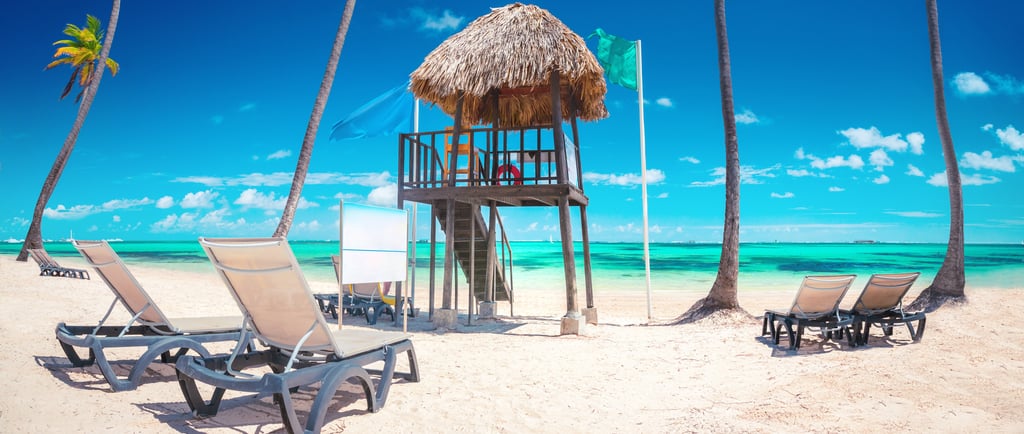

Table of Contents
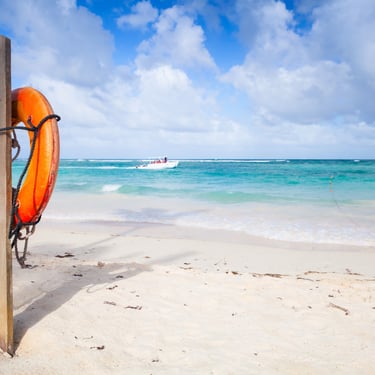
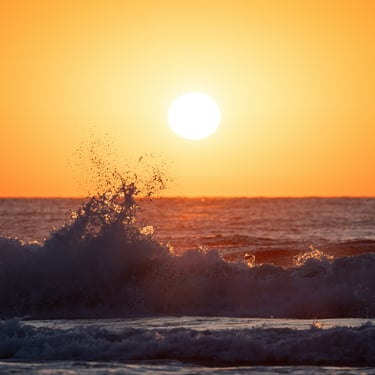
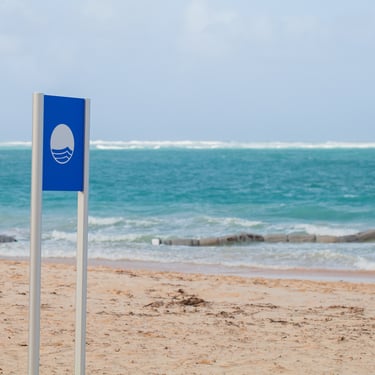
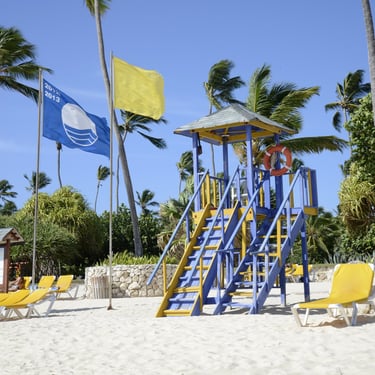
Introduction
The Dominican Republic is home to some of the most beautiful beaches in the world. With its turquoise waters, soft sand, and warm weather, it’s a dream destination for travelers. However, enjoying the beach safely is just as important as having fun.
Beach safety matters because the ocean can be unpredictable. Even experienced swimmers can run into trouble with strong waves, rip currents, or sudden weather changes. Plus, long hours in the sun can lead to sunburn or dehydration. Being aware of beach safety helps prevent accidents and ensures that your vacation remains stress-free and enjoyable.
Here’s what you need to know to stay safe and enjoy the beach:
Lifeguards
Unlike in some other countries, most public beaches in the Dominican Republic do not have lifeguards. Lifeguards are typically found only at private resort beaches, popular tourist zones, or certain organized recreational areas. Choosing beaches near resorts or well-frequented areas is a good idea if safety is a priority.
Where Are Lifeguards More Common?
Punta Cana: Many resorts along Bávaro Beach have lifeguards for guests.
Puerto Plata: Some popular beaches like Playa Dorada and Playa Sosúa may have lifeguards, especially near resort areas.
La Romana & Bayahibe: Resort beaches in Bayahibe and Dominicus Beach tend to have lifeguards.
Santo Domingo: Boca Chica may have occasional lifeguards in high-traffic areas.
For beaches without lifeguards, swimming with a buddy is highly recommended.
Swimming Areas: Stay Safe in Designated Zones
At resort beaches and some well-maintained tourist spots, you will find buoy-marked swimming zones designed to keep swimmers safe from boat traffic and strong currents.
✅ Why Staying in the Swimming Area is Important
Many beaches in the Dominican Republic are shared by swimmers, catamarans, and speedboats. Marked swimming zones, usually outlined by floating buoys, are the safest areas for swimmers because they help:
Keep You Away from Boats – Outside these zones, boats, and other watercraft frequently pass by, creating dangerous conditions for swimmers.
Protect You from Strong Currents – Some beaches have rip currents or deeper waters beyond the buoys. Staying within the designated area helps prevent getting caught in unsafe waters.
Ensure Lifeguard Visibility – If you’re swimming at a resort beach with lifeguards, staying in the marked area allows them to monitor your safety.
❌Public Beaches Usually Do Not Have Marked Swimming Areas
If you're at a public beach assume there are no designated swim zones or lifeguards. Always watch for boats and changing water conditions.
Beach Flag System: Know the Warnings
Many Dominican beaches in front of resorts use an international color-coded flag system to indicate water conditions:
🟢 Green Flag: Safe conditions for swimming. Waves and currents are mild.
🟡 Yellow Flag: Moderate hazards. Waves and currents may be stronger, so swim with caution.
🔴 Red Flag: Water is closed to the public due to dangerous conditions. Do not enter.
🟣 Purple Flag: Indicates the presence of dangerous marine life (jellyfish, stingrays, or sea lice). Take extra precautions or avoid swimming.
🔵 Blue Flag: Awarded to eco-friendly, clean, and safe beaches that meet high environmental and safety standards.
If you want a beach with clean water, proper waste management, and safe swimming conditions, look for the Blue Flag designation.
Few public beaches in the DR display flags, so check conditions before swimming. Ask locals, hotel staff, or tour guides about current water safety.
Rip Currents
Rip currents are strong, fast-moving water channels that flow away from shore. They can form on any beach with waves and are a common cause of rescues and drownings. Knowing how to recognize and handle them can help you stay safe.
✅How to Identify a Rip Current
Water color difference – A rip current often looks darker and deeper than the surrounding water.
Foam and debris movement – If you see foam, seaweed, or sand being pulled steadily out to sea, it may be a rip current.
Wave patterns – A break in the pattern of incoming waves, where the water looks calmer, can indicate a rip current.
Strong surface flow – If water is moving quickly away from shore, especially in a narrow path, it’s likely a rip current.
✅What to Do If Caught in a Rip Current
Stay calm – Panic leads to exhaustion. Keep breathing steady.
Do not swim against the current – Fighting it directly toward shore will quickly tire you out.
Swim parallel to the shore – Move sideways until you’re out of the current, then swim back to land at an angle.
Float and signal for help if needed – If you can’t escape, conserve energy by floating and waving one arm to signal lifeguards.
Most rip currents are only 30-100 feet wide, so moving sideways just a short distance can get you out of danger. Always swim with a buddy and let someone know your plans.
Wave Conditions
.Waves vary depending on the beach, weather, and ocean conditions. Some areas have small, gentle waves, while others experience strong, fast-moving surf that can be dangerous for swimmers. Understanding wave behavior can help you stay safe in the water.
✅Types of Waves to Watch For
Spilling Waves – These waves break gently and are common on sandy beaches with a gradual slope. They’re usually safer for swimming.
Plunging Waves – These break suddenly and with force, often forming barrels. They are powerful and can knock swimmers down.
Surging Waves – These waves don’t break but instead rush up the shore quickly. They can be dangerous near rocks or steep beaches.
✅ How to Stay Safe:
Check Conditions First – Always check the surf forecast, beach flags, and lifeguard warnings before entering the water.
Brace for Big Waves – If a large wave is coming, stay low, bend your knees, and protect your head if needed.
Stay Alert – Never turn your back on the ocean; always keep an eye on incoming waves to avoid being caught off guard.
Know Your Limits – If the waves seem too powerful, it’s safer to stay out and wait for calmer conditions.
Sun, Heat & Hydration: Stay Cool and Safe at the Beach
Not all heat feels the same. The Dominican Republic’s tropical sun is strong and intense, and spending too much time in it can lead to sunburn, dehydration, or even heat exhaustion. Just like big waves, the heat can be dangerous if you're not prepared!
✅ How to Stay Safe:
Check the UV Index: Before heading to the beach, check how strong the sun is for the day. A high UV index means you can burn quickly!
Use Sunscreen & Wear Protective Gear: Apply sunscreen (SPF 70+) before going outside, and reapply every two hours or after swimming. A hat, sunglasses, and light clothing help protect your skin from the sun.
Drink Lots of Water: Saltwater and sweating can dehydrate you fast. Drink plenty of water or coconut water throughout the day. If you feel dizzy or extra tired, drink more and take a break.
Find Shade & Take Breaks: Avoid too much sun between 10 AM and 4 PM when it’s the strongest. Use a beach umbrella or find shade under a tree to cool down.
Watch for Signs of Heat Exhaustion: If you feel dizzy, super sweaty, or weak, it could be heat exhaustion. Move to the shade, drink water, and cool off. If someone faints or feels confused, get medical help immediately.
For more tips, check out our post on beating the heat in the Dominican Republic.
Marine Life
The ocean is full of fascinating creatures, and most encounters are harmless. But a little knowledge can help you avoid unwanted surprises while swimming.
✅Jellyfish: What to Do If You See One
Jellyfish are not common on all Dominican beaches, but they can appear, especially after storms or strong tides. Most species here have mild stings, but some can irritate. To avoid jellyfish stings, check for warning signs at your beach, avoid swimming where jellyfish are visible, and wear a rash guard or a swimsuit with more protection coverage.
What to Do If You Get Stung:
Rinse with seawater, not fresh water, as freshwater can make the sting worse.
Apply vinegar if available—it helps neutralize the sting.
Remove tentacle pieces gently with tweezers or a credit card (don’t use bare hands).
If you experience swelling, difficulty breathing, or a severe reaction, seek medical attention.
✅Stingrays
Stingrays like to rest on the sandy ocean floor, especially in shallow waters. They are not aggressive but may sting if stepped on.
What to Do If Stung
Soak the affected area in hot water (not scalding) to relieve pain.
Remove any visible stinger carefully.
Seek medical help, especially if you have swelling or signs of infection.
✅Fire Coral
Fire coral is not actually a coral, but a marine organism related to jellyfish. It has a hard structure and can be found in shallow waters, especially around reefs. If touched, it can cause a painful burning sensation.t.
What to Do If You Touch Fire Coral
Rinse the area with seawater, not freshwater.
Apply vinegar if available to neutralize the sting.
Avoid rubbing the affected area, as it can worsen the irritation.
Seek medical help if the pain is severe or if irritation lasts for several hours.
✅Other Notable Creatures
Sea Urchins – Found in rocky areas, their spines can be painful if stepped on. Wear water shoes in rocky zones and avoid touching them.
Barracudas – Sometimes spotted near coral reefs, but they are not a danger unless provoked. Avoid wearing flashy jewelry, which might attract their curiosity.
Cone Snails – Their shells look beautiful, but some can deliver a mild sting. It’s best to admire them without touching.
Sharks? – Sharks are present in the waters around the Dominican Republic, but they stay in deeper areas and rarely come near swimming beaches.

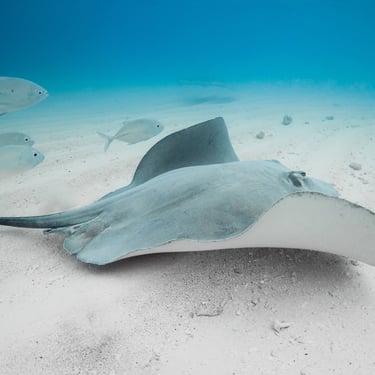
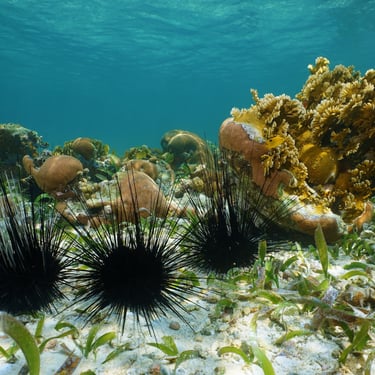
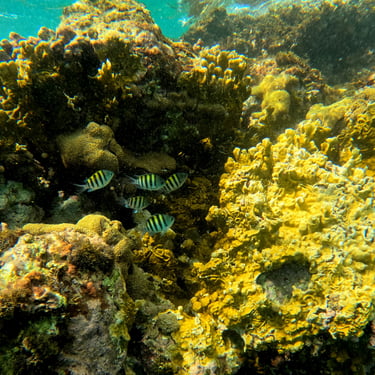
What to Avoid: Night Swimming & Alcohol
While the beach is a great place to relax, some risks aren’t worth taking. Swimming at night might seem fun and peaceful, but it’s much more dangerous than during the day. Drinking alcohol at the beach can also lower awareness and slow reaction time, making swimming a serious risk.
❌Night Swimming
Low visibility – Rocks, rip currents, and deep water are harder to spot in the dark.
No lifeguards – If something happens, help may not be available at night.
The ocean doesn’t rest – Waves and currents can still be strong, even when the water looks calm.
Personal Safety Concerns: Beaches may be less secure after dark, raising personal safety issues
❌Alcohol & Swimming
Slower reflexes – Alcohol affects balance and coordination, making it harder to swim safely.
Poor judgment – Strong waves, sudden drop-offs, and rip currents are harder to notice after drinking.
Higher risk of accidents – Tripping on rocks, misjudging water depth, or losing balance in waves is more likely when drinking.
Dehydration & Heatstroke – Alcohol dehydrates you, making you more vulnerable to sunburn and heat exhaustion.
Enjoy cocktails AFTER swimming- not before.
Keep Your Belongings Secure at the Beach
The beach is a great place to relax, but keeping an eye on your valuables is still important. Since you'll be swimming, sunbathing, or exploring, taking a few simple precautions can help you avoid any unwanted surprises.
✅ How to Keep Your Items Safe:
Use a Waterproof Pouch – If you’re going for a swim, keep your phone, money, and ID safe and dry in a waterproof pouch. (Check out this highly-rated waterproof pouch on Amazon)
Get a Secure Beach Bag – A lockable or slash-proof bag adds extra protection for your belongings. Choose one with zippers for added security. (Recommended beach bag on Amazon)
Choose a Smart Spot – Pick a visible area where you can keep an eye on your belongings. Beaches near lifeguard stations or family-friendly zones tend to be safer.
Stay Aware of Your Space – If someone unexpectedly offers help or starts a conversation, stay mindful of your bag and personal items. Most people are friendly, but it's always good to be aware.
Use a Portable Safe – If you're carrying cash, keys, or jewelry, a portable travel safe with a combination lock can keep your items extra secure. (Check out this travel-friendly portable safe on Amazon)
What to Do in Case of an Emergency
What if something unexpected happens?
Accidents & Medical Assistance: Dial 911 or proceed to the nearest hospital or clinic. In tourist areas, many medical professionals speak English. Notable medical facilities in Punta Cana include:
Hospital IMG Punta Cana: +1(809) 285-6116
Hospiten Bávaro: +1(809) 686-1414
Beach-Related Emergencies: Seek assistance from on-duty lifeguards or local beach patrol officers. Always heed posted warning flags and signs indicating water conditions.
Theft or Scams: Contact the Tourist Police (POLITUR) at +1 809-200-3500. They are specially trained to assist tourists facing safety concerns.
Travel Insurance: A comprehensive travel insurance policy covering medical emergencies, lost baggage, and trip cancellations is highly recommended. Read more.
Popular travel insurance providers include Seven Corners and Travelex Insurance
✅Extra Beach Safety Resources
Stay Informed About Local Conditions: Before heading to the beach, check current weather and sea conditions.
Windfinder: Offers detailed wind, wave, and weather forecasts for various Dominican beaches.
Surf-Forecast: Provides surf reports and forecasts for popular spots like Punta Cana. .
With these tips, you’re all set for an amazing beach day in the Dominican Republic! Enjoy the sun, sand, and waves—safely!
Want to enjoy some of the best beaches in the Dominican Republic? Relax on the stunning Saona Island or explore the crystal-clear waters of Catalina Island.
Explore the Dominican Republic with DR Simplified – Your Viator Travel Shop!
Discover the best excursions, cultural experiences, and adventure tours in the Dominican Republic, all handpicked for travelers like you! Whether you're looking for stunning beaches, historical sites, or thrilling activities, our Viator shop offers top-rated tours with trusted guides. Book with ease and make your trip unforgettable!
Terms and Conditions © All rights reserved 2025
Affiliate Disclaimer
Some links on DR Simplified are affiliate links. If you make a purchase or booking, we may earn a commission at no extra cost to you. Thanks for your support!



